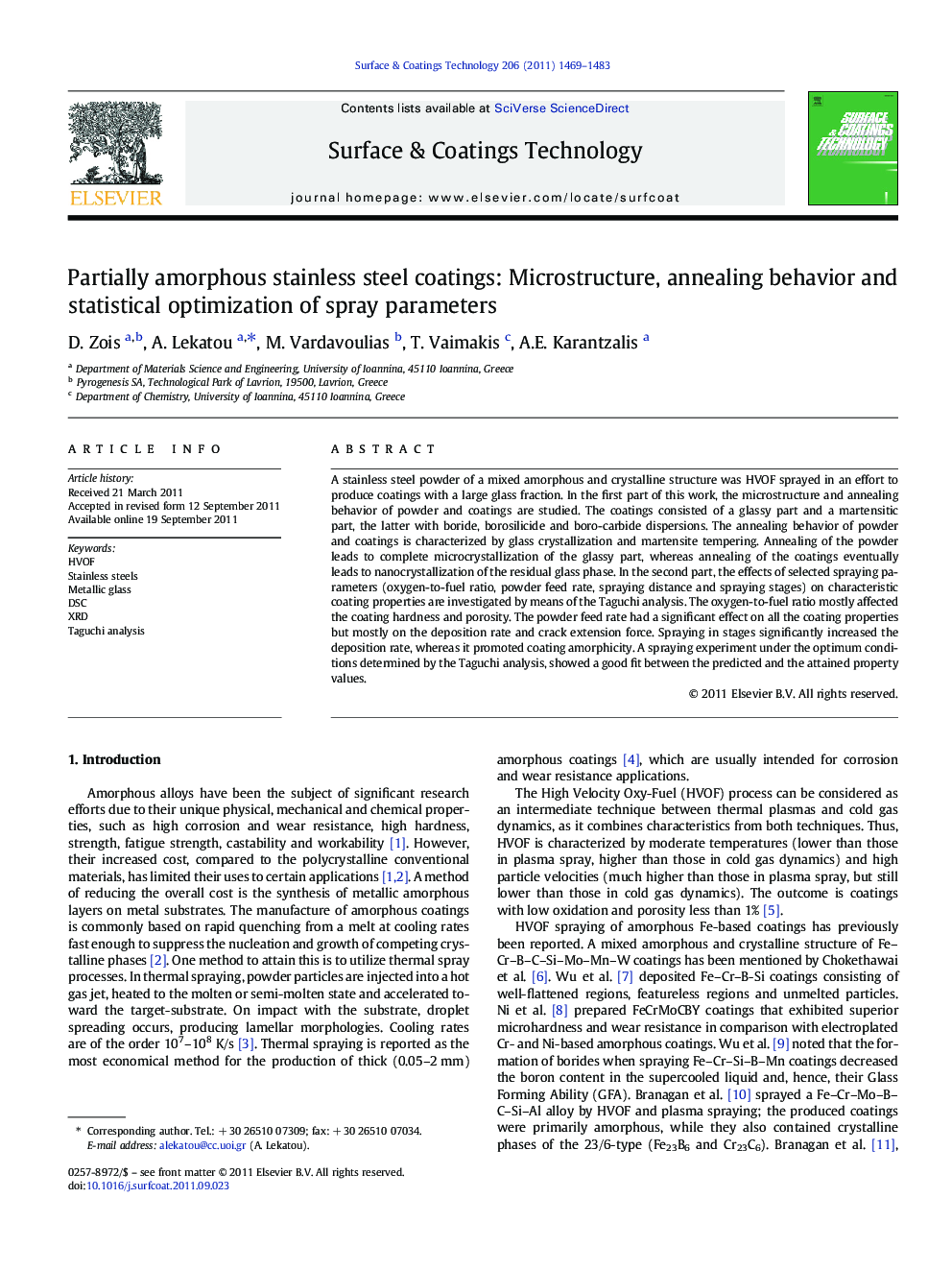| Article ID | Journal | Published Year | Pages | File Type |
|---|---|---|---|---|
| 1658750 | Surface and Coatings Technology | 2011 | 15 Pages |
A stainless steel powder of a mixed amorphous and crystalline structure was HVOF sprayed in an effort to produce coatings with a large glass fraction. In the first part of this work, the microstructure and annealing behavior of powder and coatings are studied. The coatings consisted of a glassy part and a martensitic part, the latter with boride, borosilicide and boro-carbide dispersions. The annealing behavior of powder and coatings is characterized by glass crystallization and martensite tempering. Annealing of the powder leads to complete microcrystallization of the glassy part, whereas annealing of the coatings eventually leads to nanocrystallization of the residual glass phase. In the second part, the effects of selected spraying parameters (oxygen-to-fuel ratio, powder feed rate, spraying distance and spraying stages) on characteristic coating properties are investigated by means of the Taguchi analysis. The oxygen-to-fuel ratio mostly affected the coating hardness and porosity. The powder feed rate had a significant effect on all the coating properties but mostly on the deposition rate and crack extension force. Spraying in stages significantly increased the deposition rate, whereas it promoted coating amorphicity. A spraying experiment under the optimum conditions determined by the Taguchi analysis, showed a good fit between the predicted and the attained property values.
► The annealing behavior of partially amorphous steel powders/coatings is clarified. ► Starting powders and coatings show different glass contents. ► Critical (HVOF) spray parameters are optimized by Taguchi Analysis. ► The coating crystalline/amorphous state is correlated with the coating properties. ► The relative fracture toughness of the coatings is evaluated by indentation.
